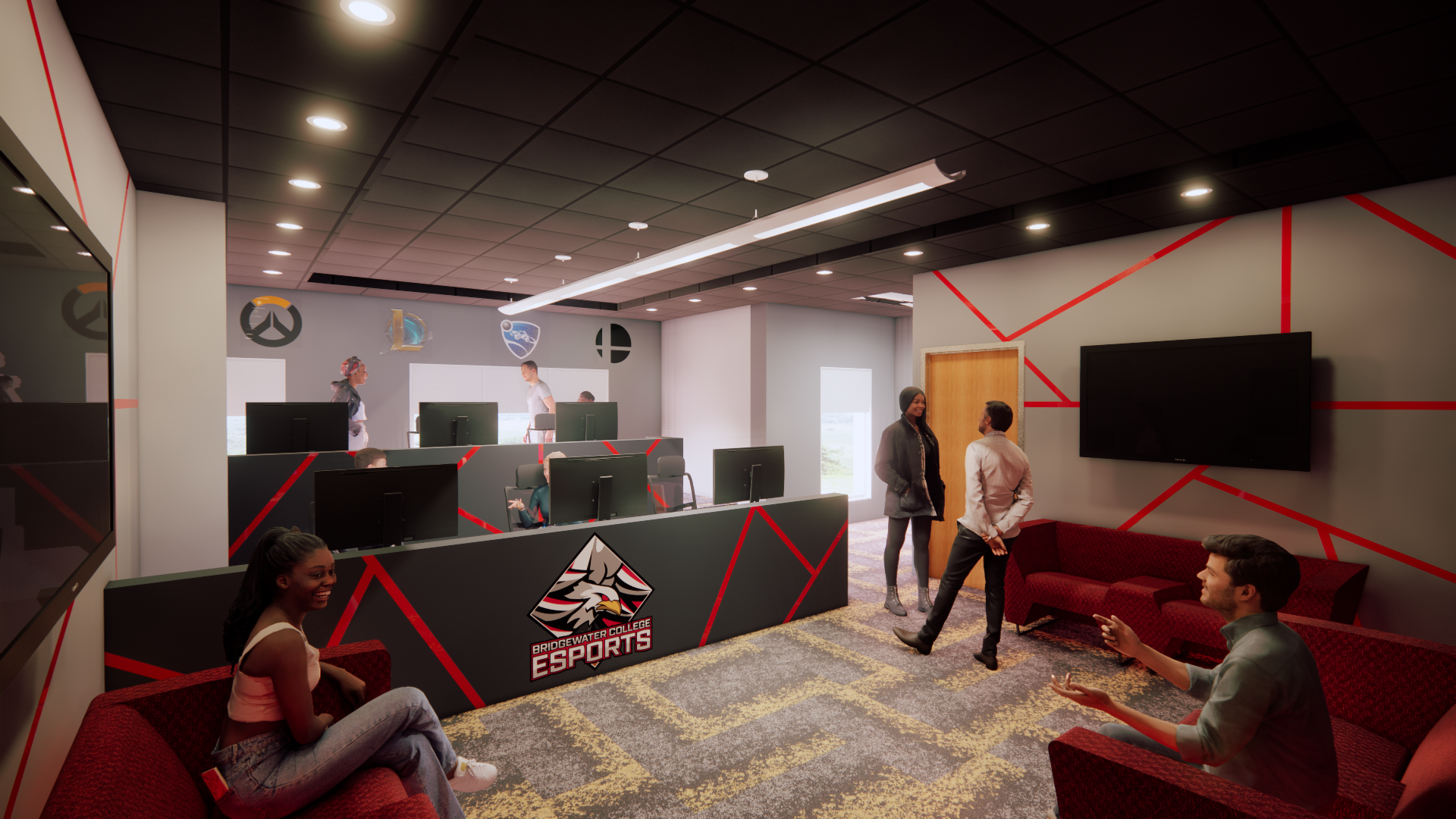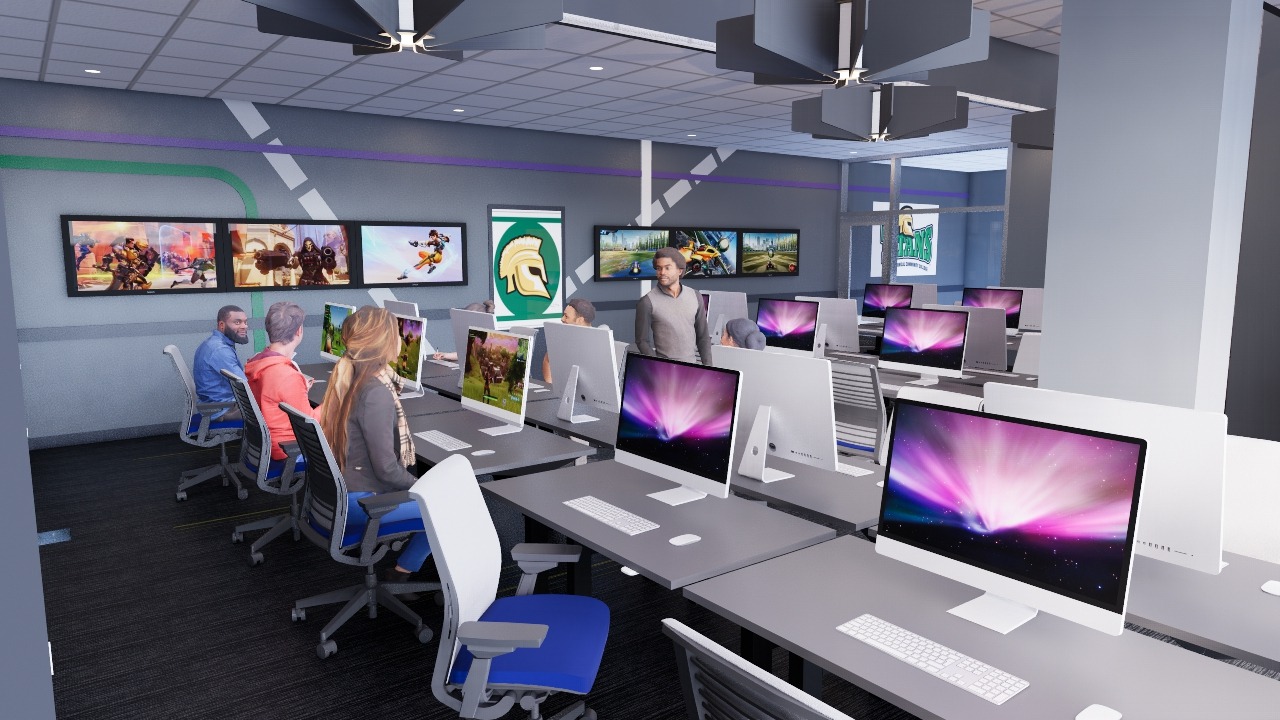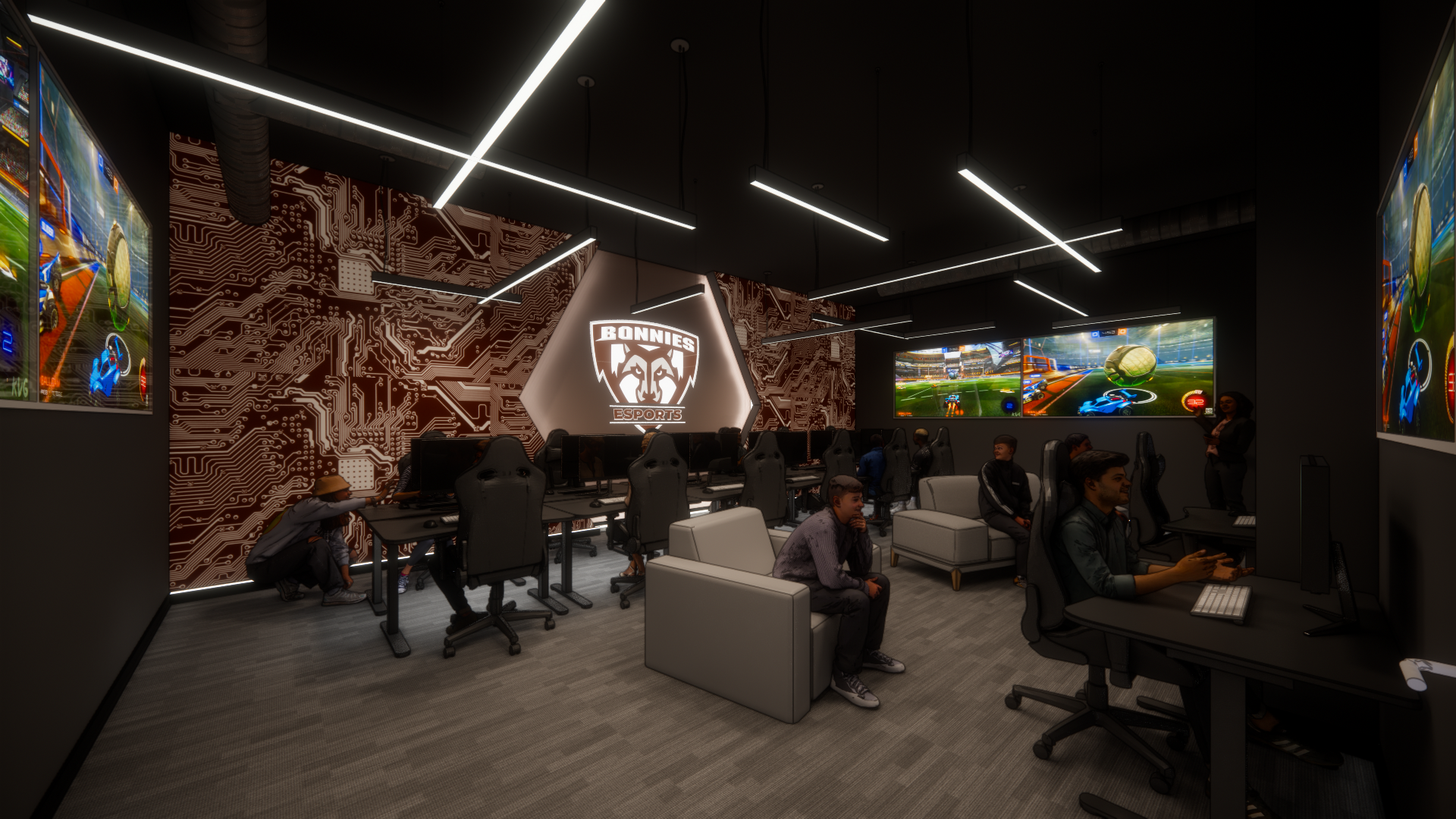What was once viewed as a hobby has now become a booming organized professional sport, garnering the attention of gamers and spectators all over the world. Close to 1 billion people pressed play on eSports events in 2019, which means this competitive industry is here to stay.
With today’s gaming culture giving young people aspirations of going pro, colleges, universities and even high schools should take notice.
Facing declining enrollment numbers, higher education institutions across the country can leverage eSports’ massive popularity into a highly effective student recruiting and retention tool. But to join in on the competition, schools need to incorporate fully equipped arenas for collegiate athletes to practice and compete in.
Adding Varsity eSports Programs to Drive Student Interest
While establishing a new eSports program can feel like a daunting undertaking, strategic visioning can help simplify the process of creating high-tech gaming arenas and practice rooms that fit within the context of your campus. This was the case for Bridgewater College, who recently took on the initiative to add a new eSports suite that would house club and varsity-level eSports programs for interested students.
The vision mapped out a 3,000 sq. ft. space inside a recently constructed building link between two of the College’s Residence Halls―an ideal location to allow students to connect over their love for gaming. Plans also feature a variety of flexible lounging spaces throughout the suite to facilitate opportunities to meet and socialize.
Once completed, eSport players and spectators will have access to a multi-purpose practice area, a competition room with raised platforms and a viewing broadcast space.

Rendering showing gaming stations and seating area in Bridgewater College’s eSports suite.
Similar planning and visioning took place at Guilford Technical Community College (GTCC), who sought our partnership to develop their new 2,300 sq. ft. eSports facility. Through a clear understanding of space utilization, we’ve curated plans for a multi-functional gaming suite, complete with active gaming stations, a team practice room, a spectator viewing area, a coach’s office and audio-visual storage.
Critical design elements will include the prominent integration of GTCC’s logo and school colors as well as recessed in-wall LED lighting to yield a visually compelling suite that keeps students on their ‘A-game’.

Rendering showing gaming stations in Guilford Technical Community College’s eSports suite.
Transforming Underutilized Campus Spaces into Modern Esports Facilities
Adaptive reuse practices can also be used to seamlessly add new eSport spaces―especially when time and money are important factors. St. Bonaventure University (SBU) chose this creative approach by renovating underused classrooms in their Reilly Center, a multi-purpose arena in the heart of their campus.
Capitalizing on approximately 617 sq. ft. of existing space, conceptual designs have started to envision an eSports facility that will enable collegiate-level competitions, while providing a signature ‘wow’ factor that student gamers are looking for. This prominent gaming aesthetic will feature dark ceilings paired with in-wall lighting, new gaming stations with state-of-the-art computers and peripherals, large mounted screens and comfortable student lounging areas.

Rendering of St. Bonaventure University’s new eSports facility.
The Time Is Now for Collegiate eSports Facilities
In the U.S., over 600 colleges and universities have added varsity eSports teams, and PlayVS recently announced a partnership to bring eSports to close to 20,000 high schools. What’s more, an eSports Olympic debut could be on the horizon.
As this emerging industry gains more interest, higher education institutes should continue to take action by adding dynamic competitive gaming spaces onto their campuses. With benefits like attracting prospective students and retaining current ones to boosting school spirit and comradery, eSports has a valuable, lasting place in higher education.

